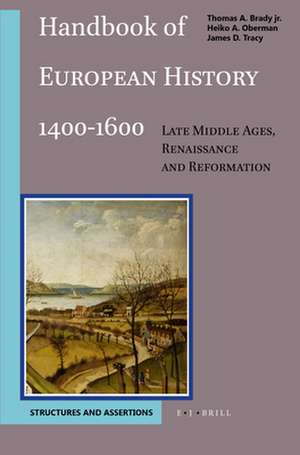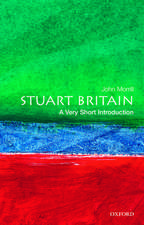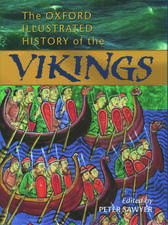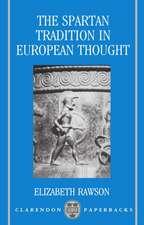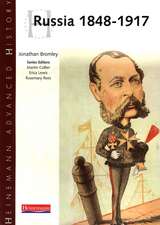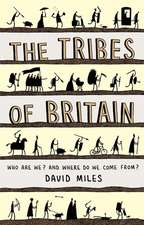Handbook of European History 1400-1600: Late Middle Ages, Renaissance and Reformation: Volume I: Structures and Assertions
Editat de Thomas Brady, Oberman, James D. Tracyen Limba Engleză Hardback – 31 mai 1994
Preț: 809.94 lei
Preț vechi: 987.72 lei
-18% Nou
Puncte Express: 1215
Preț estimativ în valută:
154.100€ • 158.73$ • 128.94£
154.100€ • 158.73$ • 128.94£
Carte disponibilă
Livrare economică 26 februarie-12 martie
Preluare comenzi: 021 569.72.76
Specificații
ISBN-13: 9789004097605
ISBN-10: 9004097600
Pagini: 710
Dimensiuni: 155 x 235 x 42 mm
Greutate: 1.56 kg
Editura: Brill
Colecția Brill
ISBN-10: 9004097600
Pagini: 710
Dimensiuni: 155 x 235 x 42 mm
Greutate: 1.56 kg
Editura: Brill
Colecția Brill
Cuprins
Introduction: Renaissance anmd Reformation, Late Middle Ages and Early Modern Era.
Part 1. The Framework of Everyday Life: Structures.
Jan de Vries, 'Population.'
Merry E. Wiesner, 'Family, Household, and Community.'
Thomas W. Robisheaux, 'The World of the Village.'
Bartolomé Yun, 'Economic Cycles and Structural Changes.'
John H. Munro, 'Patterns of Trade, Money, and Credit.'
Steven Rowan, 'The Urban Community: Rulers and Ruled.'
Robert W. Scribner, 'Elements of Popular Belief.'
Robert Bonfil, 'Aliens Within: The Jews and Antijudaism.'
Part 2. Politics, Power, and Authority: Assertions.
John Van Engen, 'The Church in the Fifteenth Century.'
John A. Marino, 'The Italian States in the "Long Sixteenth Century".'
Bernard Chevalier, 'France from Charles VII through Henry IV.'
David M. Loades, 'England under the Tudors.'
Volker Press, 'The Habsburg Lands: the Holy Roman Empire.'
Henry Kamen, 'The Habsburg Lands: Iberia.'
Hugo de Schepper, 'The Habsburg Lands: the Netherlands.'
Michael E. Mallett, 'The Art of War.'
James D. Tracy, 'Taxation and State Debt.'
Cemal Kafadar, 'The Ottomans and Europe.'
Wolfgang Reinhard, 'The Seaborne Empires.'
Conclusion: The Interaction of Structures and Assertions.
Part 1. The Framework of Everyday Life: Structures.
Jan de Vries, 'Population.'
Merry E. Wiesner, 'Family, Household, and Community.'
Thomas W. Robisheaux, 'The World of the Village.'
Bartolomé Yun, 'Economic Cycles and Structural Changes.'
John H. Munro, 'Patterns of Trade, Money, and Credit.'
Steven Rowan, 'The Urban Community: Rulers and Ruled.'
Robert W. Scribner, 'Elements of Popular Belief.'
Robert Bonfil, 'Aliens Within: The Jews and Antijudaism.'
Part 2. Politics, Power, and Authority: Assertions.
John Van Engen, 'The Church in the Fifteenth Century.'
John A. Marino, 'The Italian States in the "Long Sixteenth Century".'
Bernard Chevalier, 'France from Charles VII through Henry IV.'
David M. Loades, 'England under the Tudors.'
Volker Press, 'The Habsburg Lands: the Holy Roman Empire.'
Henry Kamen, 'The Habsburg Lands: Iberia.'
Hugo de Schepper, 'The Habsburg Lands: the Netherlands.'
Michael E. Mallett, 'The Art of War.'
James D. Tracy, 'Taxation and State Debt.'
Cemal Kafadar, 'The Ottomans and Europe.'
Wolfgang Reinhard, 'The Seaborne Empires.'
Conclusion: The Interaction of Structures and Assertions.
Recenzii
'Scholars and students will welcome this enterprise as the single best summary and synthesis of a generation of historical research on the whole period...'
H.C.E. Midelfort, 1995.
'Despite its heft and cost, this is a handbook in the best sense: up-to-date, concise, well-informed, and informative. Each of the 19 central chapters is written by a leading expert in that field and has helpful notes and bibliographies to point the way to further scholarship. Historiographical problems raised by such a multiauthor, multitheme work are directly and firmly recognized, faced, and discussed so as to leave open the door to other interpretations. There are 11 "assertions" chapters that tend to the narrative style and concern the church, national histories (minus Scandinavia and Eastern Europe), warfare, taxes, and seaborne empires. The "structures" chapters--on demography, family and community, villages, economic cycles, elements of popluar belief, economies, and Jews and opposition to them--are chiefly topical and generally reveal more newly broken ground. The introduction and conclusion set the chapters in perspective, two useful appendixes detail coinages and ruling houses. A second volume will contain mosly "religious and ecclesiastical topics." Undoubtedly useful (despite languages suited for advanced students), this reference work well repays its price. Highly recommended for upper-division undergraduate and graduate collections.'
P.L. Kintner, Choice, 1995.
'Students of European history will find much to inform, challenge, and frequently enough, to illuminate.'
R.J. Schoeck, Sixteenth Century Journal, 1995.
'…haben die Herausgeber der Vielfalt der Entwicklungen in bemerkenswert adäquater Weise Rechnung getragen, und ist die Qualifikation als Handbuch unbedingt gerechtfertigt.'
Peter Dinzelbacher, Mediaevistik, 1999.
H.C.E. Midelfort, 1995.
'Despite its heft and cost, this is a handbook in the best sense: up-to-date, concise, well-informed, and informative. Each of the 19 central chapters is written by a leading expert in that field and has helpful notes and bibliographies to point the way to further scholarship. Historiographical problems raised by such a multiauthor, multitheme work are directly and firmly recognized, faced, and discussed so as to leave open the door to other interpretations. There are 11 "assertions" chapters that tend to the narrative style and concern the church, national histories (minus Scandinavia and Eastern Europe), warfare, taxes, and seaborne empires. The "structures" chapters--on demography, family and community, villages, economic cycles, elements of popluar belief, economies, and Jews and opposition to them--are chiefly topical and generally reveal more newly broken ground. The introduction and conclusion set the chapters in perspective, two useful appendixes detail coinages and ruling houses. A second volume will contain mosly "religious and ecclesiastical topics." Undoubtedly useful (despite languages suited for advanced students), this reference work well repays its price. Highly recommended for upper-division undergraduate and graduate collections.'
P.L. Kintner, Choice, 1995.
'Students of European history will find much to inform, challenge, and frequently enough, to illuminate.'
R.J. Schoeck, Sixteenth Century Journal, 1995.
'…haben die Herausgeber der Vielfalt der Entwicklungen in bemerkenswert adäquater Weise Rechnung getragen, und ist die Qualifikation als Handbuch unbedingt gerechtfertigt.'
Peter Dinzelbacher, Mediaevistik, 1999.
Notă biografică
Thomas A. Brady, Jr. has taught at the University of Oregon, where he was President's Distinguished Professor of the Humanities, and he now teaches European history at the University of California, Berkeley. His writings include Ruling Class, Regime, and Reformation at Strasbourg, 1520-1550 (1978), Turning Swiss: Cities and Empire, 1450-1550 (1985), and Protestant Politics: Jacob Sturm (1498-1553) and the German Reformation (1993).
Heiko A. Oberman, formerly of Harvard University and the University of Tübingen, is now Regents Professor of History and Director of the Division for Late Medieval and Reformation Studies at the University of Arizona. He is best known for The Harvest of Medieval Theology (1963), Masters of the Reformation (German, 1977), The Roots of Anti-Semitism (German, 1981), and Luther: Man between God and the Devil (English, 1992).
James D. Tracy has been a member of the History Department at the University of Minnesota since 1966. His major publications are Erasmus: the Growth of a Mind (1972); The Politics of Erasmus: a Pacifist Intellectual and his Political Milieu (1978); A Financial Revolution in the Habsburg Netherlands: "Renten" and "Renteniers" in the County of Holland, 1506-1565 (1985); and Holland under Habsburg Rule: the Formation of a Body Politic (1990).
Heiko A. Oberman, formerly of Harvard University and the University of Tübingen, is now Regents Professor of History and Director of the Division for Late Medieval and Reformation Studies at the University of Arizona. He is best known for The Harvest of Medieval Theology (1963), Masters of the Reformation (German, 1977), The Roots of Anti-Semitism (German, 1981), and Luther: Man between God and the Devil (English, 1992).
James D. Tracy has been a member of the History Department at the University of Minnesota since 1966. His major publications are Erasmus: the Growth of a Mind (1972); The Politics of Erasmus: a Pacifist Intellectual and his Political Milieu (1978); A Financial Revolution in the Habsburg Netherlands: "Renten" and "Renteniers" in the County of Holland, 1506-1565 (1985); and Holland under Habsburg Rule: the Formation of a Body Politic (1990).
